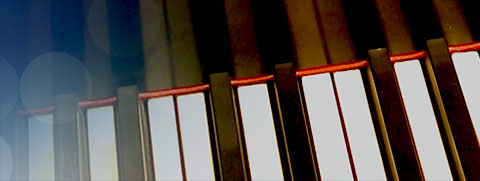
Over time, a piano will require more than just tuning. Depending on how often the piano is being used will usually determine how often repairs will be necessary. Most repairs can be done in the home, but sometimes it is necessary to perform repairs in a shop setting, where access to tools and parts is more convenient.
Typically, the first repair to any piano will be to re-shape the hammers. In most cases, this can be done in the home. Over time they will start to flatten out and start to produce a more "brassy" or "brittle" tone. They will also become harder as a result of the felt compressing. Re-shaping and voicing the hammers will usually produce the most dramatic affect a customer will hear with their instrument.
Similar to rotating the tires and keeping them in balance, keeping the action in regulation will produce not only the best "touch" for your instrument, but will also give the pianist the best opportunity to produce the best "tone" for the instrument. A piano action that is out of regulation is typically hard to play for any length of time, destroying any chance of the pianist reaching their full potential. My feeling on this subject is “If it´s not fun to play, then you won´t".
Certain action regulation adjustments can be done in the home. However, if the action has fallen into a state where these adjustments are not feasible by themselves, then it is necessary to transport the action to a shop setting to perform a complete and thorough top-to-bottom regulation. There are many more repairs that can be done in the home that don´t require you to be without your piano for any length of time. A good maintenance schedule will help you enjoy the piano for a long, long time.

